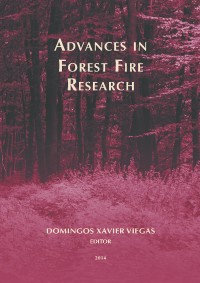Please use this identifier to cite or link to this item:
https://hdl.handle.net/10316.2/34271| DC Field | Value | Language |
|---|---|---|
| dc.contributor.author | Grenfell, Isaac C. | |
| dc.contributor.author | Finney, Mark A. | |
| dc.contributor.author | Trethewey, Dianne | |
| dc.date.accessioned | 2014-10-23T14:51:31Z | |
| dc.date.accessioned | 2020-09-09T21:31:11Z | - |
| dc.date.available | 2014-10-23T14:51:31Z | |
| dc.date.available | 2020-09-09T21:31:11Z | - |
| dc.date.issued | 2014 | - |
| dc.identifier.isbn | 978-989-26-0884-6 (PDF) | |
| dc.identifier.uri | https://hdl.handle.net/10316.2/34271 | - |
| dc.description.abstract | Fire suppression continues to be a costly endeavour in the United States and elsewhere. In order to develop a systematic approach to allocating resources to fight wildland fire, it is necessary to understand the underlying process by which ignitions occur on a continental scale with respect to fire weather. We therefore developed a technique that simulated a gridded fire weather index from historical observations and then simulated ignitions at a local scale. The procedure required two steps. First, a model for fire-days (at least one fire occurring on each 30km pixel) used the localized percentile of the ERC (energy release component) as a predictor. A logistic regression model using ERC percentile at that pixel predicted a binary response (fire-day/no-fire-day). Then, for those pixels where at least one ignition occurs, a VGAM (vector generalized additive model) with a Pareto response also used ERC percentile as the predictor. This yielded a dataset of simulated ERC percentiles and the associated number of ignitions for each pixel and each day. The related metadata for each ignition (cause, time of detection, etc.) are sampled from the historical distributions conditional on location. What results is a simulated equivalent of the Fire Occurrence Database which is ready for use in applications for strategic planning. | eng |
| dc.language.iso | eng | - |
| dc.publisher | Imprensa da Universidade de Coimbra | por |
| dc.relation.ispartof | http://hdl.handle.net/10316.2/34013 | por |
| dc.rights | open access | - |
| dc.subject | Spatial temporal simulation | eng |
| dc.subject | Ignition generation | eng |
| dc.subject | Energy release component | eng |
| dc.subject | Pareto distribution | eng |
| dc.title | Generation of simulated ignitions for the continental United States | por |
| dc.type | bookPart | por |
| uc.publication.firstPage | 1407 | - |
| uc.publication.lastPage | 1410 | - |
| uc.publication.location | Coimbra | por |
| dc.identifier.doi | 10.14195/978-989-26-0884-6_154 | - |
| uc.publication.section | Chapter 5 - Fire Suppression and Safety | por |
| uc.publication.digCollection | PB | por |
| uc.publication.orderno | 154 | - |
| uc.publication.area | Ciências da Engenharia e Tecnologias | por |
| uc.publication.bookTitle | Advances in forest fire research | - |
| uc.publication.manifest | https://dl.uc.pt/json/iiif/10316.2/34271/211279/manifest?manifest=/json/iiif/10316.2/34271/211279/manifest | - |
| uc.publication.thumbnail | https://dl.uc.pt/retrieve/11171957 | - |
| uc.publication.parentItemId | 53868 | - |
| uc.itemId | 70259 | - |
| item.grantfulltext | open | - |
| item.fulltext | With Fulltext | - |
| Appears in Collections: | Advances in forest fire research | |
Files in This Item:
| File | Description | Size | Format | |
|---|---|---|---|---|
| 978-989-26-0884-6_154.pdf | 1.39 MB | Adobe PDF |  |
Items in DSpace are protected by copyright, with all rights reserved, unless otherwise indicated.
